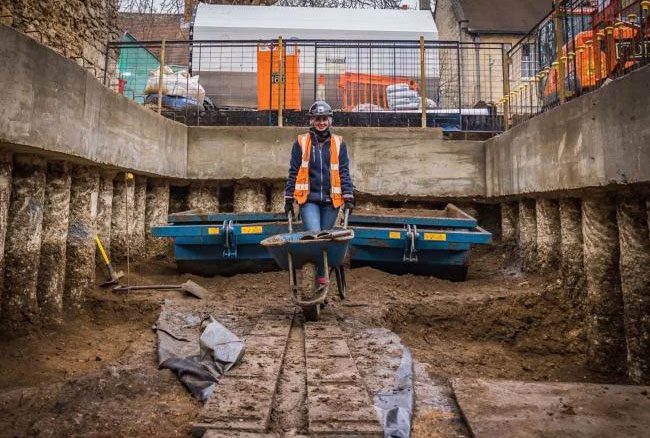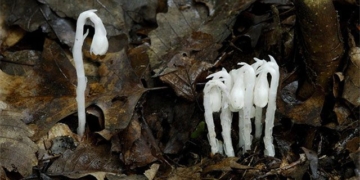A team of archaeologists from the University of Oxford (UK) has announced the discovery of the limestone foundations of St Mary’s College, a school that has vanished from history, dating back to the early 16th century.
According to the Oxford Mail, the archaeological team is excavating the area around New Inn Hall before clearing the site for the construction of student dormitories at Frewin Hall of Brasenose College (University of Oxford).
Ben Ford, the senior project manager of the Oxford archaeological team, stated that they hope to clarify the layout of the lost St Mary’s College while also searching for evidence of life from one of the most powerful Norman families that may have once lived there.

The foundations of the historically lost school in England excavated during dormitory construction. (Photo: Oxford Mail).
St Mary’s College was established in 1435 as a residence for clergy studying at Oxford.
The school faced many challenges until Cardinal Wolsey, the Lord Chancellor under King Henry VIII, intervened in its operations during the 1520s.
Cardinal Wolsey commissioned several constructions. However, around the 1530s, King Henry VIII disbanded the monastery, marking the end of St Mary’s College.
During the excavation, archaeologists uncovered part of a structure dating back to the early 16th century.
The massive limestone foundation walls are believed to be the base of a significant building. Experts suggest it may belong to one of the structures at St Mary’s College.
Additionally, the archaeological team discovered animal bones and charcoal in a nearby area, possibly the school’s kitchen. They also found stone flags, bone combs, silver coins, and medieval floor tiles.
Evidence from a house built for a wealthy owner during the Norman period indicates that the Frewin Hall area has been inhabited since the 11th century.
Ben Ford noted that Frewin Hall is one of the oldest buildings still in use at Oxford.
He assessed that if they are fortunate, the archaeological team may uncover even older evidence of life from the time when Oxford was established as a heavily fortified town along the Thames River, serving as a boundary between Saxon and Viking territories.
Dr. Llewelyn Morgan from Brasenose College remarked that the discovery of the St Mary’s College ruins is significant as it served educational purposes for 600 years.




















































